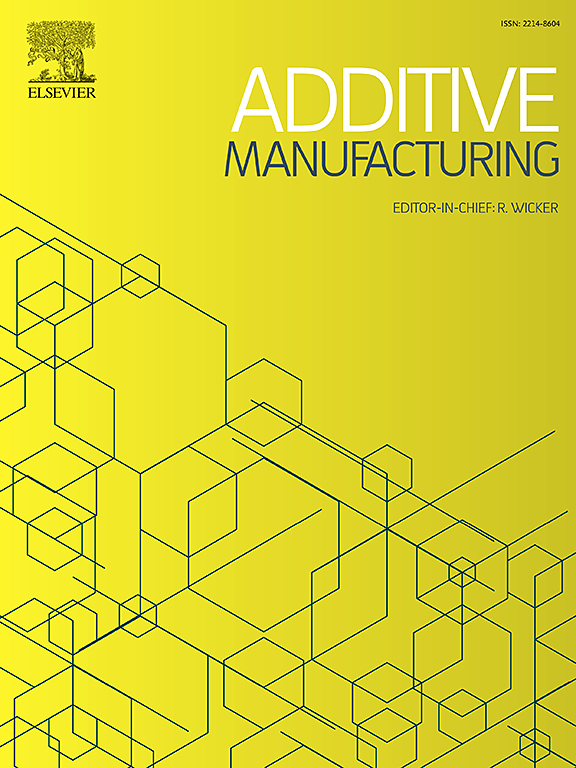电子束粉末床熔合过程的熔体内电子分析监测
IF 10.3
1区 工程技术
Q1 ENGINEERING, MANUFACTURING
引用次数: 0
摘要
电子束粉末床熔融是一种先进的增材制造技术,有效的过程监控是保证高打印质量的关键。在重复的局部熔化过程中,电子和物质的相互作用提供了丰富的熔体内信息。为了有效地利用发射的电子信号,本研究通过分析和解释主要由背散射、二次电子和热电子组成的发射,开发了一种熔体内电子分析(IMEA)方法。由于热离子电子与最热点的温度和面积高度相关,因此可以通过发射电子的信号来监测熔池的特征。进行了两种熔化方式:(1)在没有粉末的裸板上进行单轨熔化;(2)在粉末床上进行印刷。我们证明了在316 L不锈钢裸板上测量的熔体内电子强度与熔池宽度相关。此外,我们还展示了IMEA方法在316 L不锈钢粉末床上80层真实打印过程中熔池动力学(如熔池表面凹陷)的应用。该方法提供了可靠的熔池特征和表面沉降监测,为PBF-EB过程控制提供了一个有前途的工具。本文章由计算机程序翻译,如有差异,请以英文原文为准。
Electron beam powder bed fusion process monitoring by in-melt electron analysis
Effective process monitoring is crucial for ensuring high print quality in electron beam powder bed fusion (PBF-EB), an advanced additive manufacturing technique. The interaction of electrons and matter provides a wealth of in-melt information during repeated local melting. To utilize the emitted electron signal efficiently, this study develops an in-melt electron analysis (IMEA) approach by analyzing and interpreting emissions, primarily composed of backscattered, secondary, and thermionic electrons. Owing to the high correlation of thermionic electrons to the temperature and area of the hottest spot, the melt pool characteristics can be monitored from the signal of emitted electrons. Two types of melting were conducted: (1) single tracks on a bare plate without powder and (2) printing on a powder bed. We demonstrate that the intensity of measured in-melt electrons correlated with the melt pool width on bare plate of 316 L stainless steel. In addition, we also demonstrate the applications of IMEA approach to detect the melt pool dynamics such as melt pool surface depression during a real print of 80 layers on 316 L stainless steel powder bed. This approach provides reliable monitoring of melt pool characteristics and surface depression, offering a promising tool for process control in PBF-EB.
求助全文
通过发布文献求助,成功后即可免费获取论文全文。
去求助
来源期刊

Additive manufacturing
Materials Science-General Materials Science
CiteScore
19.80
自引率
12.70%
发文量
648
审稿时长
35 days
期刊介绍:
Additive Manufacturing stands as a peer-reviewed journal dedicated to delivering high-quality research papers and reviews in the field of additive manufacturing, serving both academia and industry leaders. The journal's objective is to recognize the innovative essence of additive manufacturing and its diverse applications, providing a comprehensive overview of current developments and future prospects.
The transformative potential of additive manufacturing technologies in product design and manufacturing is poised to disrupt traditional approaches. In response to this paradigm shift, a distinctive and comprehensive publication outlet was essential. Additive Manufacturing fulfills this need, offering a platform for engineers, materials scientists, and practitioners across academia and various industries to document and share innovations in these evolving technologies.
 求助内容:
求助内容: 应助结果提醒方式:
应助结果提醒方式:


